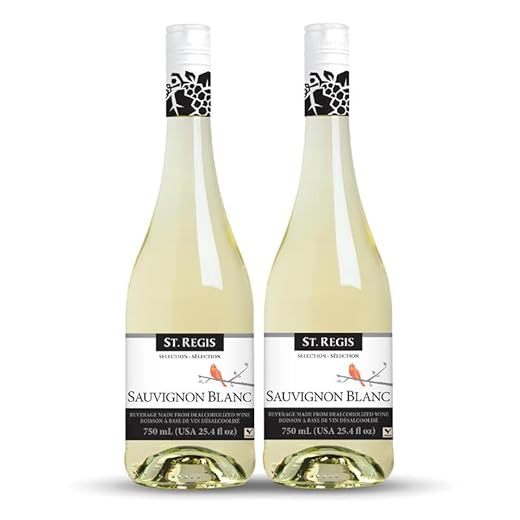



Chablis stands out as an exceptional option for those seeking a crisp and mineral-driven beverage. This French gem, crafted from the Chardonnay grape, boasts vibrant acidity and a distinctive flinty character that makes it incredibly food-friendly. Pairing it with oysters or light seafood dishes elevates the entire dining experience.
The unique terroir of Chablis, characterized by Kimmeridgian clay and limestone soils, imparts a remarkable freshness that sets it apart from other Chardonnay varietals. Look for a Premier Cru Chablis to experience a more complex profile with notes of green apple, citrus, and subtle hints of oak. Producers such as Domaine William Fèvre and Domaine Laroche consistently deliver outstanding bottles that exemplify the quality of this region.
For a delightful afternoon sip, a well-chilled Petit Chablis offers a more approachable option without sacrificing flavor. These wines typically exhibit bright fruit notes and a refreshing finish, perfect for casual gatherings or picnics. Remember to serve these selections at the right temperature to fully appreciate their nuances.
Top 5 White Wines for Beginners
1. Sauvignon Blanc from Marlborough, New Zealand – This varietal showcases bright acidity and refreshing citrus notes, making it an excellent entry point for those new to this type of beverage. Look for labels that mention “gooseberry” and “lime” for a classic experience.
2. Pinot Grigio from Italy – Known for its light body and crisp flavors, Pinot Grigio often features hints of pear and green apple. This option pairs well with light seafood dishes, enhancing the dining experience without overwhelming the palate.
3. Chardonnay from California – A versatile choice, this varietal can range from buttery and oaky to crisp and mineral-driven. Opt for unoaked versions to appreciate the fruit-forward characteristics, like peach and citrus, which are perfect for beginners.
4. Riesling from Germany – This grape can produce wines from dry to sweet, but starting with a semi-dry Riesling allows for a balance of sweetness and acidity. Look for labels that indicate “Kabinett” for a lighter, more refreshing style.
5. Grüner Veltliner from Austria – Often overlooked, this grape offers a unique profile with notes of white pepper and stone fruits. It pairs wonderfully with spicy dishes, making it a delightful choice for those looking to explore beyond the typical options.
Recommendations for Selection
- Focus on regions known for quality production.
- Check for beginner-friendly labels with clear tasting notes.
- Consider purchasing from local wine shops for personalized recommendations.
Food Pairings
Experiment with pairing these selections alongside light appetizers, salads, or seafood. This enhances the enjoyment and helps you understand the nuances of each varietal.
How to Choose White Wine for Different Occasions
For a summer barbecue, opt for a refreshing Sauvignon Blanc. Its crisp acidity and herbaceous notes complement grilled vegetables and seafood perfectly.
Formal Dinners
At a formal gathering, consider serving a Chardonnay. Choose one that is oaked for a richer flavor profile. Pair it with poultry or creamy pasta dishes to enhance the meal’s elegance.
Casual Gatherings
For a laid-back get-together, a Pinot Grigio is ideal. Its light body and fruity character make it versatile for casual appetizers, from cheese platters to light salads. This selection is approachable and enjoyable for various palates.
When celebrating special moments, reach for a sparkling option like Prosecco. Its effervescence adds a festive touch, making it suitable for toasting on birthdays or anniversaries.
Always consider the food pairings and the preferences of your guests. A well-chosen selection can elevate the experience and create lasting memories around the table.
Comparing Dry vs. Sweet White Wines
For those exploring the spectrum of fermented grapes, the choice between dry and sweet varieties is pivotal. Dry options, such as Sauvignon Blanc or Chardonnay, exhibit crisp acidity and pronounced fruit notes, making them perfect companions for seafood or light salads. They typically have minimal residual sugar, allowing the natural flavors of the fruit to shine through.
On the flip side, sweet selections like Riesling or Moscato offer a luscious mouthfeel and are characterized by their higher sugar content. These are ideal for pairing with spicy dishes or desserts, as they can balance out heat and enhance sweetness.
When determining your preference, consider the occasion. A dry option can elevate a formal dinner, while a sweet counterpart might suit a casual gathering or celebration. The key is to experiment with both styles to understand how each complements various foods and personal tastes.
As you explore these categories, focus on the flavor profile. Dry wines often showcase citrus, green apple, or mineral qualities, whereas sweet wines may present notes of peach, honey, or tropical fruits. Tasting these differences will enhance your appreciation and guide your selections in the future.
Best Food Pairings for Popular White Wines
Chardonnay pairs beautifully with roasted chicken or creamy pasta dishes, enhancing the meal with its buttery notes.
Sauvignon Blanc complements fresh seafood, particularly oysters and grilled fish, thanks to its crisp acidity and herbal undertones.
Riesling, known for its sweetness, works well with spicy Asian cuisine, balancing heat with its fruity profile. Try it with Thai dishes or spicy curries.
Pinot Grigio is perfect alongside light salads or bruschetta, as its refreshing characteristics elevate the flavors of fresh vegetables and herbs.
Gewürztraminer shines with rich, fatty foods like duck or creamy cheeses, providing a delightful contrast with its aromatic spice and fruitiness.
| Wine Type | Recommended Food Pairings |
|---|---|
| Chardonnay | Roasted chicken, creamy pasta |
| Sauvignon Blanc | Fresh seafood, oysters, grilled fish |
| Riesling | Spicy Asian cuisine, Thai dishes, spicy curries |
| Pinot Grigio | Light salads, bruschetta |
| Gewürztraminer | Duck, creamy cheeses |
Understanding Labels: What to Look For
Focus on the varietal and region. The grape type has a significant influence on flavor. For example, Sauvignon Blanc from New Zealand often has a zesty lime character, while Chardonnay from California might showcase buttery notes. Knowing the region can help predict the wine’s style and quality.
Check the vintage year. This indicates the harvest time and can affect the wine’s taste. Some years produce exceptional grapes, so researching the best vintages for specific varietals can enhance your selection.
Look for information on the producer. Established wineries with a good reputation typically offer more reliable quality. Don’t hesitate to explore lesser-known producers; they often provide excellent options at lower prices.
Alcohol content can be a clue to the sweetness. Higher alcohol levels might suggest a riper grape, often resulting in a richer flavor profile. Conversely, a lower alcohol level may indicate a crisper, fresher taste.
Read tasting notes if available. They provide insights into the flavor profile and potential food pairings. This can guide your decision and enhance your dining experience.
Lastly, consider looking at the back label. It may offer additional details about the wine’s production methods or specific tasting notes, which can further inform your choice. And for those interested in maintaining balance in other areas, check out this resource on how to decrease nitrite in aquarium.
Tips for Storing and Serving Quality Vino
Maintain a consistent temperature between 45°F and 55°F for optimal enjoyment. Avoid fluctuations that can spoil delicate flavors.
Store bottles horizontally to keep corks moist, preventing air from entering and spoiling the content. Ensure that the storage area is dark, as light exposure can degrade the quality.
Humidity levels should be around 50-70% to prevent corks from drying out or mold from forming. A wine fridge can help maintain these conditions effectively.
Before serving, chill a bottle in the fridge for about two hours. If you’re short on time, an ice bucket with water and ice for 20-30 minutes does the trick. Aim for a serving temperature of 50°F to 55°F for most varietals.
Use appropriate glassware; a tulip-shaped glass enhances the aroma and allows for better appreciation of the nuances. Always pour about one-third of the glass to allow room for swirling and aeration.
For the best experience, decant if the vino is particularly young or robust. This process can elevate the flavors by allowing it to breathe.
Finally, serve smaller portions for tasting, allowing guests to savor each sip and fully appreciate the complexities of the flavors.
FAQ:
What are some popular types of white wine for beginners?
For those new to white wine, some popular choices include Chardonnay, Sauvignon Blanc, and Pinot Grigio. Chardonnay is known for its buttery texture and flavors of apple and pear, while Sauvignon Blanc tends to be more crisp and refreshing, often with citrus notes. Pinot Grigio is light and easy to drink, usually featuring floral and fruity aromas. These wines are versatile and can pair well with various dishes, making them great options for beginners.
How do I choose a nice white wine for a dinner party?
When selecting a white wine for a dinner party, consider the menu and the preferences of your guests. A good rule of thumb is to choose a wine that complements the food. For seafood dishes, a Sauvignon Blanc or a dry Riesling can enhance the flavors. If you’re serving chicken or creamy pasta, a Chardonnay might be a better match. Additionally, having a mix of options, including both dry and sweet wines, can cater to different tastes and make your dinner party more enjoyable.
What are the characteristics of a quality white wine?
A quality white wine often exhibits a balance of acidity, sweetness, and flavor complexity. Look for wines with bright acidity, which provides freshness and enhances food pairing. The aroma should be inviting, with notes that can range from fruity to floral or mineral. A good finish, which is the lingering taste after swallowing, is also a sign of quality. Wines that have undergone proper aging might display additional depth and character. Ultimately, personal taste plays a significant role in determining what you enjoy.
Can you recommend a nice white wine for a summer picnic?
For a summer picnic, a light and refreshing white wine is ideal. A good choice would be a Sauvignon Blanc, particularly one from New Zealand, known for its zesty acidity and tropical fruit flavors. Another excellent option is a Vinho Verde from Portugal, which is slightly effervescent and very refreshing. If you prefer something a bit sweeter, a Moscato could be delightful, offering fruity flavors and a lower alcohol content. These wines are easy to drink chilled and pair well with light snacks and salads.
How should I store white wine to maintain its quality?
To maintain the quality of white wine, store it in a cool, dark place, ideally at a temperature between 45°F and 65°F (7°C to 18°C). It’s best to keep the bottles lying on their sides if they have corks to keep the cork moist. Avoid exposing the wine to direct sunlight and temperature fluctuations, as these can degrade the wine over time. If you have opened a bottle, recork it tightly and refrigerate it, which can help preserve its freshness for a few days.








